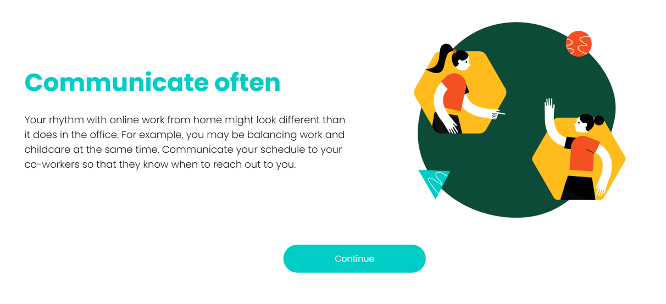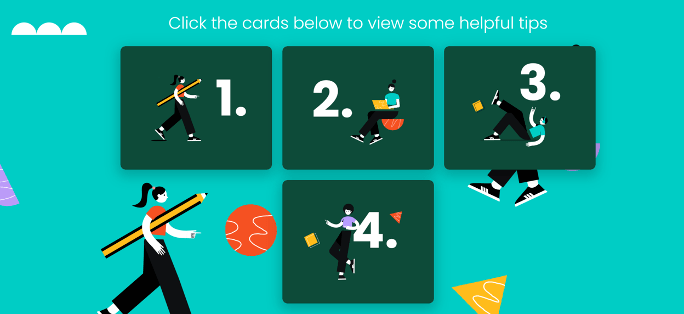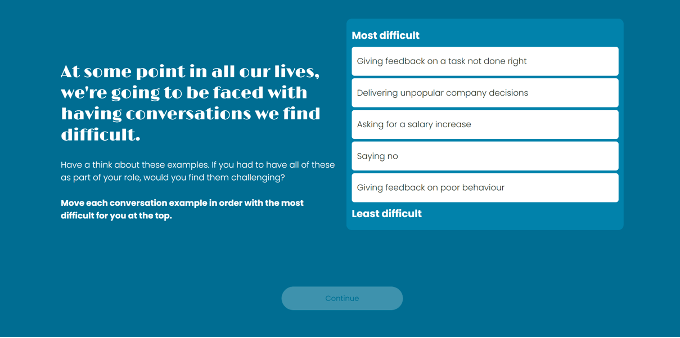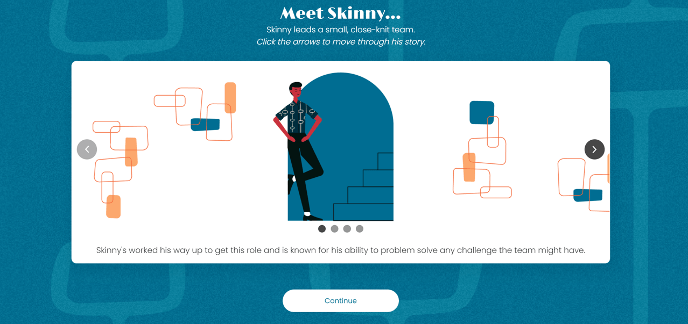
The Latest On 2015’s L&D Wunderkind
When microlearning toddled onto the learning scene in the mid-noughties, Amazon was 11, blogs were old news, Google was becoming dominant, and Facebook was brand new. Our brains were on that slippery digital slope to an attention span shorter than that of the proverbial goldfish [1]. Bliss was it in that dawn to be alive etc.
As humans became groomed by social media to become ever more impatient, Google searches for microlearning grew and grew. 2015 saw a spike which continued to 2019 (and probably beyond). In an age where we’re not prepared to wait three seconds for a website to load [2], snackable learning seems a sound move.
It’s not just that we’re lazy, although thinking hard is hard work [3]. Our short attention spans are also a result of increasing cognitive load. Our brain can only process so much each day, yet we’re bombarded with so much info our attention spans are decreasing in self-defense.
One of the reasons the dark lords of tech like Steve Jobs and Mark Zuckerberg wear the same clothes every day is (or was, in Steve’s case) to decrease their cognitive load. Many high achievers are attached to routines for the same reason. They’re freeing their minds for more profitable things than thinking about what shirt to wear or what to have for lunch.
Microlearning 101
Skip this if you’re a microlearning pro, ’cause this is basic.
Microlearning breaks learning up into bite-sized microcontent. Each module is focused on a single idea and takes no more than five minutes to consume, often less.
The strengths of microlearning are many. Here are a few highlights. We’ve kept it to five because any more than five bullets is too much for our overstretched brains.
- Microlearning caters to our diminishing attention spans.
- It makes indigestible topics more accessible.
- It makes it easier for learners to seek information they need when they need it.
- It helps people retain information. Our brains like info served up in tasty nuggets.
- It’s great for supporting longer learning. Research indicates we forget 50% of what we learn within an hour and 80% within the month if learning is not reinforced. Microlearning can repeat key concepts and boost long-term retention.
Why Did Microlearning Become So Scorching Hot?
Microlearning evolved in response to the increasing pace of life. Even before COVID made in-person training a challenge, busy people struggled to find time for learning. In 2014, Deloitte shared that the average employee was spending 1% (only 24 minutes) of the week learning [4].
At the same time, increasingly sophisticated digital content made reams of dry learning content that took hours to digest seem boring, as well as ineffectual. And let’s be honest, folks; up until a few years ago (three, maybe) most learning content was pretty dire. Corporate, dull, and long…very, very long. Not surprisingly, learners began to push back, voting with their mouse by refusing to consume conventional learning.
It’s no coincidence microlearning blew up around 2015, at the same time mobile content became the big buzz. The shift to smartphones saw the acceleration of the trend towards consuming content in bite-sized chunks, and learners began to wonder out loud why they couldn’t consume training on their phones, on the go.
Microlearning also fits with our understanding of the different efficacy of push and pull learning. People can resist learning pushed onto them. But if learners want to know how to do something, are looking for info, or to re-embed learning they’ve already done, they’ll be happy to pull learning content themselves. And here’s where microlearning excels.
And microlearning’s aligned with developing the holy grail of L&D, a culture of learning. A learning culture is complex and not an easy thing to achieve, but microlearning helps encourage self-directed learning, one small piece of the learning culture puzzle.
Microlearning Grows Up
The basic concept of microlearning isn’t that radical. Incrementally stacking small chunks of knowledge plays to our natural cognitive processes. Microlearning gets interesting when learning theory intersects with mobile technology, gaming, and digital marketing.
Just In Time And Just Enough
Mobile tech and Google rebooted the way we demand and consume information. We’ve always been impatient, curious monkeys (well, OK, apes), but with little supercomputers in our pockets and the wisdom of the world at our fingertips, we’ve become just-in-time info junkies. We expect to be able to find the info we need instantly, and we’re not inclined to wade through a three-hour course to extract a nugget we could Google in seconds.
But it’s not that we don’t want to learn. You could argue we’ve entered a golden age for eLearning, where digital technology, job insecurity, and sophisticated marketing have intersected to create demand for learning as never before. However, that hunger for learning is fighting with our lack of time, and the clear winner is microlearning.
Microlearning enthusiast Josh Bersin advocates for content “that immediately teaches what we need to know, that inserts itself at the time of need, and is so interesting that we remember it after only a few minutes.” We’re talking about learning in the flow of work and life.
Just-in-time microlearning principles include:
- Making it easy for learners to find the information they want when they need it.
- Answering questions with highly targeted information.
- Being platform-agnostic so learners can access learning whenever, wherever.
- Engaging snackable content formats like micro video or audio, graphics, quizzes, and other interactive learning tools. More sophisticated microlearning may even offer a choice of formats to cater to different content preferences.
- Reducing barriers by making learning in short hits accessible and rewarding.
Gamification
Another contemporary development that lends itself to microlearning is gaming technology, with gamification techniques often used to make microlearning even more engaging. Gaming elements like quizzes, puzzles, interactive scenes, incentives and rewards, progress tracking or leader boards, all appeal to our competitive nature and encourage developing a learning habit.
Sophisticated Visuals, Storytelling, And UX
Digital marketing is steeped in the psychology of persuasion, and L&D developers can learn a lot from marketers. Quality microlearning adopts three key digital marketing tools.
- Visual aesthetic is central to engagement and enjoyment of learning. Beautiful design is everywhere, and if eLearning doesn’t match the sophisticated digital aesthetic learners have grown to expect, it’ll be perceived as second best.
- Storytelling is central to learning and microlearning is no exception, with micro scenarios being the perfect device to hook people in and make a concept relevant and relatable.
- User experience, or UX, is the art of using data-driven insights to carefully craft a digital experience to be intuitive, frictionless, and enjoyable.
When Microlearning Fails
Microlearning misses the mark when it’s oversimplified. Microlearning isn’t simply taking conventional learning content and chunking it up into small helpings.
Sure, that might make long-form content more digestible, but it doesn’t consider the other aspects of sophisticated microlearning, specificity (i.e., just in time and just enough), gamification, sophisticated visuals, storytelling, and UX.
Two key factors holding corporate microlearning back are usability and visual aesthetic. UX can be challenging to nail without data-driven insights, and that’s an area where SCORM-based learning platforms let L&D professionals down. Chameleon’s now hosted on a web-based platform, delivering data to help L&D designers optimize user design. If you’re unable to make the shift to Chameleon, you can still think about UX from your learner’s point of view. What would they expect? What would they enjoy? What would make them want to return?
Visual communication’s the most powerful mode of communication most humans have. That’s why we created Chameleon to improve the design and aesthetics of digital learning content. For your microlearning (and all learning content) to be successful, you must give learners a great visual experience that makes learning enjoyable and enhances your brand.
Creating engaging microlearning starts with acknowledging that there’s a disconnect between the quality of the content learners consume in everyday life and most of the learning content they consume at work. Your job’s to close that gap and make learning content as (or even more) enjoyable as the content they binge on social.
Why Aren’t More Businesses Doing Microlearning Well?
Microlearning isn’t a new concept. But we work with L&D developers at many businesses and we rarely see anyone doing it. And I have a few theories why.
One reason might simply be that people aren’t used to making microlearning. It’s a concept, not business as usual. There are a lot of L&D concepts people love to talk about but no one does.
Microlearning moves away from the traditional way L&D teams make online learning. A usual approach to online learning is to work with Subject Matter Experts. This results in big modules because experts tend to cram as much content as possible. They’re cursed with knowledge and think everyone should know as much as they do. This can be problematic if you’re trying to make a shift to microlearning.
Another reason people haven’t embraced microlearning may be resourcing. A lot of L&D teams are understaffed and microlearning can be harder to produce than long content. I was talking to a commercial writer who explained it’s standard in her industry to charge more for short content, as it’s harder to distill things down to their essentials. It can be tough to consolidate a lot of content into something that’s effective and keeps stakeholders happy.
And finally, there’s a lot of theory out there, but not a lot in the way of step-by-step instructions on how to make good microlearning. If you’re an L&D designer keen to make microlearning, how do you start?
How To Build Microlearning That Kicks Arse
Here are a few tips from our expert learning designers on creating microlearning that’s useful, enjoyable, and beautiful.
- Know microlearning’s strengths. It’s good at:
-
- Changing habits over time
- Reinforcing learning
- Making micro-resources
- Sharing updates on new products or policies
- We tend to use microlearning in two ways:
-
- Introducing a concept with a series of small lessons providing essential info in a condensed format.
- Supporting that concept with a library of just-in-time micro-resources.
- Start with your learners, understand their performance gaps, and set your learning objectives. Decide which learning is best aligned to microlearning’s strengths.
- Break those objectives down into microtasks. Think of every piece of content as answering a question from a learner, “How do I do X?”
- Harness the power of user-generated content and get your Subject Matter Experts creating knowledge-base content to create a comprehensive knowledge base of micro-resources.
- Mix up your content formats. See microlearning as a multi-platform campaign.
- Keep it short. Five minutes max. A 15-minute module ain’t microlearning, folks.
- Make sure your microlearning is built on a fully responsive, mobile-friendly platform so it can be consumed wherever and whenever, on any device.
- See microlearning content as an ongoing effort, not one and done.
- Invest time in developing your measurement strategies. How will you measure:
-
- Increase in knowledge
- Increase in productivity
- Behavioral change
Microlearning Examples Out In Τhe World
The microlearning examples we have to share are from our own learning modules because we’re yet to work with a client who’s embraced microlearning and executed it well. Keen to change that, though.
Working From Home
Our work-from-home module was created during the first wave of COVID, to help work-from-home newbies set themselves up a safe, healthy workspace. Nine bite-sized tips for working from home can be consumed in a couple of minutes.

Bite-sized tips on working from home.

Interactive elements give tips for online meetings.
Courageous Conversations
This short exercise designed to help teams with hard conversations provides snackable tips on how to successfully approach tricky topics. Three micromodules use elements like interactive lists and interactive storytelling to encourage self-reflection.

Asking people to rate how challenging they find different tricky topics.

Learners accompany Skinny through a range of challenging scenarios.
Keen To Give Microlearning A Go?
Microlearning may not be easy. But its time has come. Technology, the way we work, and the way we consume content have converged to create a landscape where microlearning’s the natural choice. We’re here to help you master microlearning for your organization.
References:
[1] You Now Have a Shorter Attention Span Than a Goldfish
[3] Ask a Neuroscientist: Why is thinking hard so hard?
